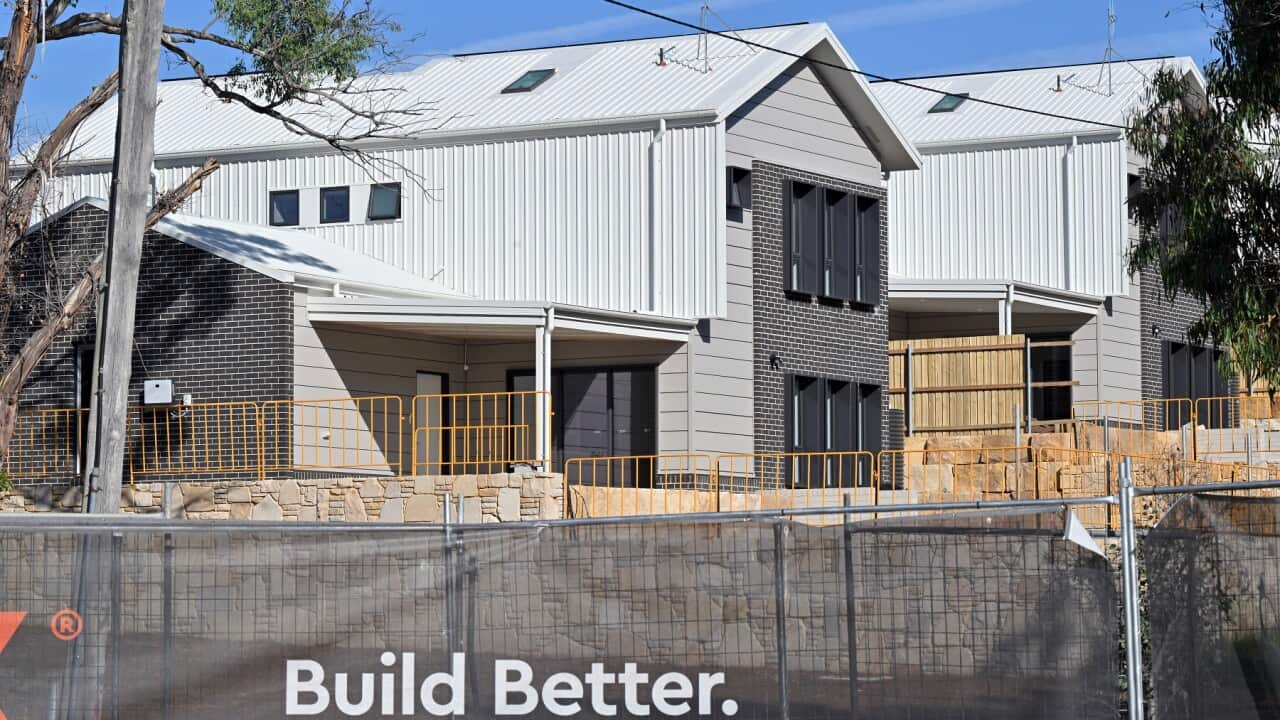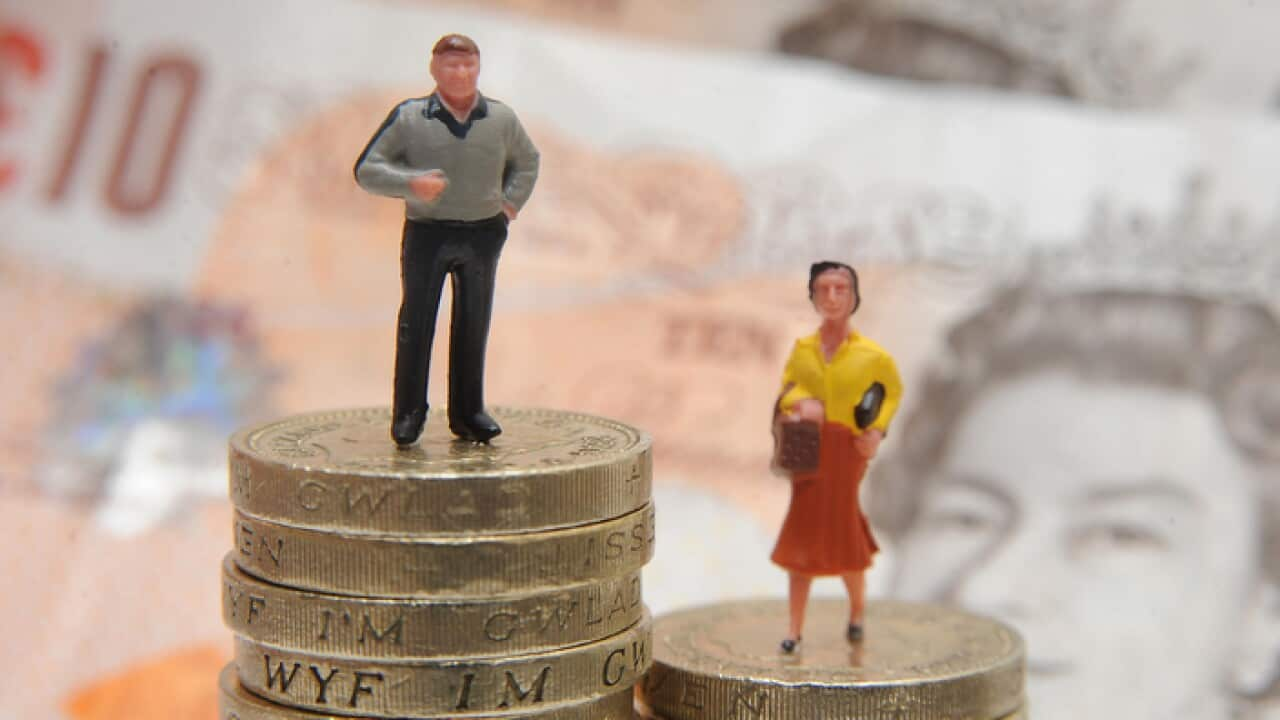English
That's a member of the press, reporting from Saigon in 1975 in the last days of the Vietnam War, amid the chaos of evacuations from the city which was soon to fall to the North Vietnamese.
The last Americans and a group of local allies were airlifted out on the orders of US President Gerald Ford.
"I felt that what we did could be fully justified in not only evacuating Americans but evacuating some of the South Vietnamese who wanted to come to the United States."
The war lasted around 20 years and claimed around 56,000 American lives.
For Vietnam, it had started almost immediately after the nearly decade-long fight to expel the colonial French who had been supported by Washington.
"Five presidents carried out a national policy. Six Congresses endorsed that policy - which was a policy of our country."
Since then, the Vietnam War has occupied a complex place in US history as arguments linger about whether Western troops should ever have been there, and efforts continue to remediate the effects of the war.
The U.S. Charge d'Affaires to Vietnam, Caryn McLelland, said in 2019 that they made particular efforts to clean up Agent Orange, a toxin that can linger in the soil for generations.
"It is difficult to understate the scale of this operation, but we did it in Danang, and we'll do it again."
As those efforts continue, Vietnam itself has slowly transformed its economy.
Tourism forms a central part of those efforts, accounting for nearly one in nine jobs in the country.
The country has had more than 17.5 million foreign visitors in 2024, close to the record 18 million set in 2019 before the COVID-19 pandemic.
And it's the war that is now a critical driver of Vietnam's growth.
Tour organiser Duong Phuc Sang says many of their visitors want to know more about the conflict.
VIETNAMESE THEN ENGLISH VO: "In Ho Chi Minh city, or the former name Saigon, tourists' itineraries normally include history museum (the war remnants museum), where memories of the war from 1954 to 1975 were recorded and displayed, and the Cu Chi tunnel complex, the heroic land."
US Army veteran Paul Hazelton is among the visitors to the Museum, which attracts some 500,000 visitors a year - two thirds of them foreigners.
"I’m just glad that we’re now trading and friendly with Vietnam and I think both sides are benefiting from it.”
The museum's exhibits focus on American war crimes and atrocities like the My Lai massacre, as well as the devastating effects of Agent Orange.
The tunnels that Mr Sang referred to are the Cu Chi tunnels, which lie on the outskirts of Ho Chi Minh city.
They were once an underground warren used by Viet Cong guerrillas to avoid detection from American planes and patrols - but now attract some 1.5 million tourists annually.
Those visitors can climb and crawl through some of the narrow passages and take a turn at a firing range shooting targets with war-era weapons like the AK-47, M-16 and the M-60 machine gunz, known as "the pig" by American troops for its bulky size and high rate of fire.
But Italian tourist Theo Buono says he's here to reflect on the past.
"It could be a nice perspective and I can understand a bit better how the facts were, how things (the war) took place, how the Vietnamese people managed to fight and protect themselves."
Meanwhile in North Vietnam, the fighting was primarily an air war, and today the Hoa Lo Prison museum tells that story from the Vietnamese perspective.
The former French prison in Hanoi was used to hold American prisoners of war, primarily pilots shot down during bombing raids.
Its most famous resident was the late American Senator John McCain after he was captured in 1967 - as he told America's ABC News.
"And then they threw me in the back of a truck and took me to the prison that we know of as the Hanoi Hilton."
Veteran Paul Hazelton has spent his trip to Vietnam touring Hue, the former Phu Bai Combat Base on the city's outskirts, and Da Nang, which was a major base for both American and South Vietnamese forces.
Back at the War Remnants Museum, Mr Hazelton says he is amazed at the transformation.
“It was a war zone when I was here before and undeveloped... But everywhere you went, you knew it was occupied territory with our military and now you just see the hustle and bustle and the industry, and it's just remarkable.”
Italian
Questo era un giornalista, in collegamento da Saigon nel 1975, negli ultimi giorni della guerra del Vietnam, nel caos delle evacuazioni dalla città che presto sarebbe passata in mano ai vietnamiti del nord.
Gli ultimi americani e un gruppo di alleati locali furono portati via in aereo su ordine del presidente americano Gerald Ford.
"I felt that what we did could be fully justified in not only evacuating Americans but evacuating some of the South Vietnamese who wanted to come to the United States."
La guerra durò circa 20 anni e fece circa 56.000 vittime americane.
Per il Vietnam era iniziata quasi subito dopo la lotta quasi decennale per espellere i coloniali francesi che erano stati sostenuti da Washington.
"Five presidents carried out a national policy. Six Congresses endorsed that policy - which was a policy of our country."
Da allora, la guerra del Vietnam occupa un posto discusso nella storia degli Stati Uniti, in quanto si dibatte sul se le truppe occidentali avrebbero dovuto essere lì e si continua a cercare di rimediare agli effetti della guerra.
L'incaricata d'affari degli Stati Uniti in Vietnam, Caryn McLelland, ha dichiarato nel 2019 di aver compiuto sforzi particolari per ripulire il suolo dal famigerato Agent Orange, una tossina che può rimanere nel terreno per generazioni.
"It is difficult to understate the scale of this operation, but we did it in Danang, and we'll do it again."
Mentre questi sforzi continuano, il Vietnam stesso ha lentamente trasformato la propria economia.
Il turismo costituisce una parte centrale di questi sforzi, dando lavoro ad un vietnamita su nove.
Il Paese ha registrato più di 17,5 milioni di visitatori stranieri nel 2024, avvicinandosi al record di 18 milioni stabilito nel 2019, prima della pandemia COVID-19.
E proprio la guerra è ora un motore fondamentale della crescita del Vietnam.
L'organizzatore di tour Duong Phuc Sang afferma che molti visitatori vogliono saperne di più sul conflitto.
VIETNAMESE THEN ENGLISH VO: "In Ho Chi Minh city, or the former name Saigon, tourists' itineraries normally include history museum (the war remnants museum), where memories of the war from 1954 to 1975 were recorded and displayed, and the Cu Chi tunnel complex, the heroic land."
Il veterano dell'esercito americano Paul Hazelton è uno dei visitatori del Museo, che attira circa 500.000 visitatori all'anno, due terzi dei quali stranieri.
"I’m just glad that we’re now trading and friendly with Vietnam and I think both sides are benefiting from it.”
Le esposizioni del museo si concentrano sui crimini di guerra americani e su atrocità come il massacro di My Lai, oltre che sugli effetti devastanti dell'Agent Orange.
I tunnel a cui si riferisce Sang sono i tunnel di Cu Chi, che si trovano alla periferia della città di Ho Chi Minh.
Un tempo erano un nascondiglio sotterraneo usato dai guerriglieri Viet Cong per evitare di essere scoperti dagli aerei e dalle pattuglie americane, ma oggi attirano ogni anno circa 1,5 milioni di turisti.
Questi visitatori possono arrampicarsi e strisciare attraverso alcuni degli stretti passaggi e fare un turno al poligono di tiro sparando a bersagli con armi del periodo bellico come l'AK-47, l'M-16 e la mitragliatrice M-60, conosciuta come “il maiale” dalle truppe americane per le sue dimensioni ingombranti e l'alta cadenza di fuoco.
Ma il turista italiano Theo Buono dice di essere qui per riflettere sul passato.
"It could be a nice perspective and I can understand a bit better how the facts were, how things (the war) took place, how the Vietnamese people managed to fight and protect themselves."
Nel frattempo, nel Vietnam del Nord si combatteva soprattutto una guerra aerea e oggi il museo della prigione di Hoa Lo racconta questa storia dal punto di vista dei vietnamiti.
L'ex prigione francese di Hanoi era utilizzata per detenere i prigionieri di guerra americani, soprattutto piloti catturati durante i bombardamenti.
Il suo “cliente” più famoso è stato il defunto senatore americano John McCain, dopo la sua cattura nel 1967, come ha dichiarato all'emittente americana ABC News.
"And then they threw me in the back of a truck and took me to the prison that we know of as the Hanoi Hilton."
Il veterano Paul Hazelton ha trascorso il suo viaggio in Vietnam visitando Hue, l'ex base di combattimento di Phu Bai alla periferia della città e Da Nang, che era una delle principali basi delle forze americane e sudvietnamite.
Tornato al War Remnants Museum, Hazelton si è detto stupito della trasformazione.
“It was a war zone when I was here before and undeveloped... But everywhere you went, you knew it was occupied territory with our military and now you just see the hustle and bustle and the industry, and it's just remarkable.”












